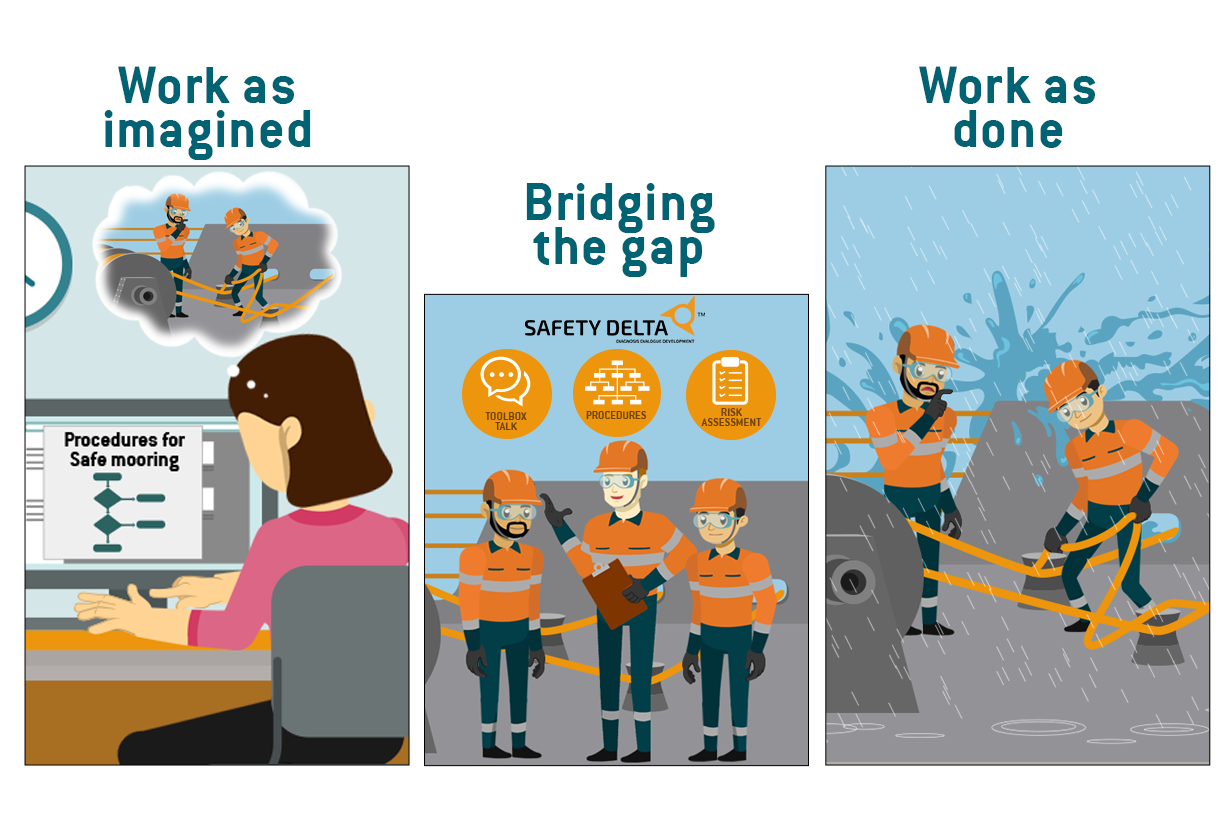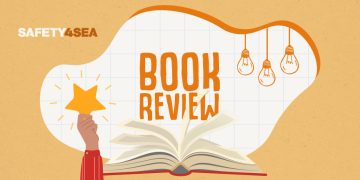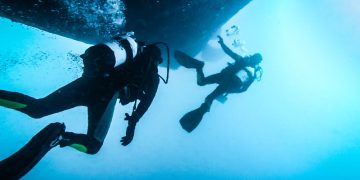Compliance in carrying out tasks can only take you so far. But what if you could go beyond compliance because you have the insights from data that tell you where you need to focus? This is the possibility that Green-Jakobsen opens to clients. With years of experience, research, and data collection spanning thousands of respondents, Green-Jakobsen can confidently point to factors that heavily influence human performance in a positive or negative direction.
One of the considerations for the optimum performance of crew is to pay attention to the gap between “work as imagined” (WAI) – ways in which work is described (typically in the SMS) – and “work as done” (WAD) – the way it actually takes place and how humans are the resource to bridge that gap.
Recognising the difference between WAI and WAD
The safety management system (SMS), risk assessments, procedures, regulations, etc. are utilised by the crew in their shipboard operations to ensure they complete the job safely. These formal instructions and descriptions of what they need to do describe “work as imagined” (WAI). In other words, they consider the ideal situation for the given task. However, the reality is that all situations are unique, and the actual conditions are often far from ideal. This calls for the crew’s ability to understand each situation well and make good judgments all the time. However, sometimes under real on-board conditions, seafarers may take shortcuts, or improvise how to solve a problem. We call the way any task is actually performed as “work as done” (WAD).
Sometimes the gap between the WAI and the WAD is stretched too much and safety becomes compromised. If the gap is too big, mistakes can lead to incidents or accidents. Therefore, we must bridge the gap between WAI and WAD.

How do human factors come into the picture?
Whenever we read stories of maritime jobs gone wrong, we often see “human error” as the reason. In maritime, human error is cited as the leading cause (at least 75%) of incidents at sea. The traditional view of human error seems to suggest that the crew are the problem and that maritime operations will be safer without them.
But the crew are as much a source of safety as a source of error. It should be noted that the number of accidents avoided by seafarers is not always reflected in statistics, while crew members successfully execute a lot of safety-critical tasks every day. Nonetheless, people will make mistakes, and these mistakes are typically due to conditions and systems that make work challenging. As mistakes usually occur in the interplay of human factors, increasing awareness of these factors can facilitate the identification of gaps in actual work situations.
Taking a human factors approach
There are many things we can do to minimise the risk of people making mistakes. One important aspect is to constantly review and reflect on how we perform every single job and allow for this reflection—not only evaluating what went wrong but also looking at what went well and why. The prerequisite for this is that we keep directing people’s attention towards conditions, behaviour, and work processes that influence safety performance.
Taking a human factors approach means recognising that the people on our ships know the most about their work and are key to any solution. To minimise human error, we must create conditions and systems that allow people to assess, decide and react, and make sure they have the skills and ability to do so.
How the Delta Method is built on the value of human factors
The Safety Delta concept has always recognised that human factors play a key role in building a proactive and resilient safety culture. In physics, the Delta “Δ” represents the difference between two values, and the Delta Method is focusing on the difference between WAI vs. WAD.
What Safety Delta does to bridge the gap is exactly to direct people’s attention to crucial safety performance areas and involve them in making a change. We often see that bringing awareness of problems and critical work processes is an eye-opener, even to experienced seafarers, as they are easily ‘blinded’ by busy schedules at work or by overconfidence and complacency. This awareness often triggers immediate improvement. Understanding the conditions in which mistakes happen helps us prevent or correct them. We can help the crew focus on things that matter, and it is especially crucial how leaders respond when things go wrong or become difficult, ensuring they take the opportunity to learn.
But before any change can happen it is fundamental that an open and trusting working environment exists, and that the leaders are ready to make the necessary moves when the Safety Delta report shows them where to focus.

































































It should be easy to do the right thing!